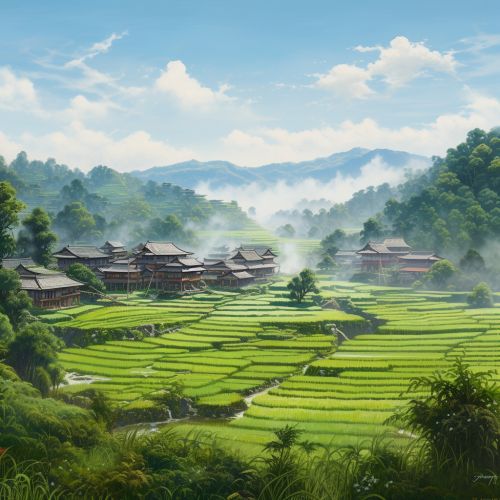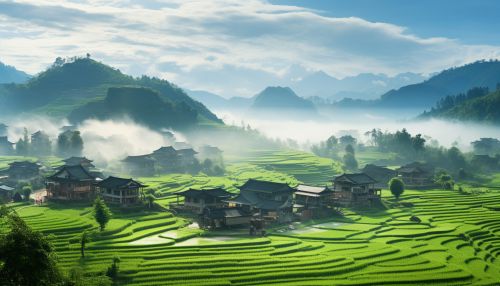Economic history of China
Ancient China
The economic history of China begins with the dawn of the ancient Chinese civilization. The Chinese economy was largely agrarian, based on farming and the cultivation of rice. The feudal system of land ownership was prevalent, with the Emperor and the nobility owning vast tracts of land.


Bronze Age Economy
During the Bronze Age, the Chinese economy saw significant growth and development. The discovery of bronze led to advancements in tools and weapons, which in turn led to increased productivity in agriculture and warfare. The Bronze Age also saw the development of early forms of currency, such as cowry shells, which were used for trade and barter.
Silk Road
The establishment of the Silk Road during the Han Dynasty marked a significant milestone in the economic history of China. This trade route connected China with the West, facilitating the exchange of goods, ideas, and culture. Chinese silk, tea, and porcelain were highly sought after in the West, while China imported goods such as gold, silver, and horses.
Song Dynasty
The Song Dynasty is often considered a high point in Chinese economic history. This period saw significant advancements in technology, including the invention of the magnetic compass, gunpowder, and movable type printing. These inventions had profound effects on the economy, leading to increased trade, improved navigation, and the spread of literacy.
Ming and Qing Dynasties
The Ming Dynasty and Qing Dynasty were periods of relative economic stability and growth. The Ming Dynasty saw the construction of the Great Wall of China, which had significant economic implications, including the mobilization of a large workforce and the development of new trade routes. The Qing Dynasty, on the other hand, was marked by economic expansion and the growth of industries such as silk, tea, and porcelain.
Modern China
The economic history of China in the 20th and 21st centuries has been marked by significant changes and developments. The establishment of the People's Republic of China in 1949 led to the implementation of a planned economy, with the state controlling all aspects of economic activity. However, the economic reforms of the late 20th century led to the development of a mixed economy, with elements of both market and planned economies.
Economic Reforms
The economic reforms initiated by Deng Xiaoping in the late 20th century marked a significant turning point in the economic history of China. These reforms, known as the Open Door policy, led to the liberalization of the Chinese economy, with a shift towards a more market-oriented economy. These reforms have resulted in significant economic growth, with China becoming one of the world's largest economies.
Current Economy
Today, the Chinese economy is characterized by a mix of private ownership and state control. The country is a global leader in various sectors, including manufacturing, technology, and finance. However, the economy also faces several challenges, including income inequality, environmental issues, and an aging population.
